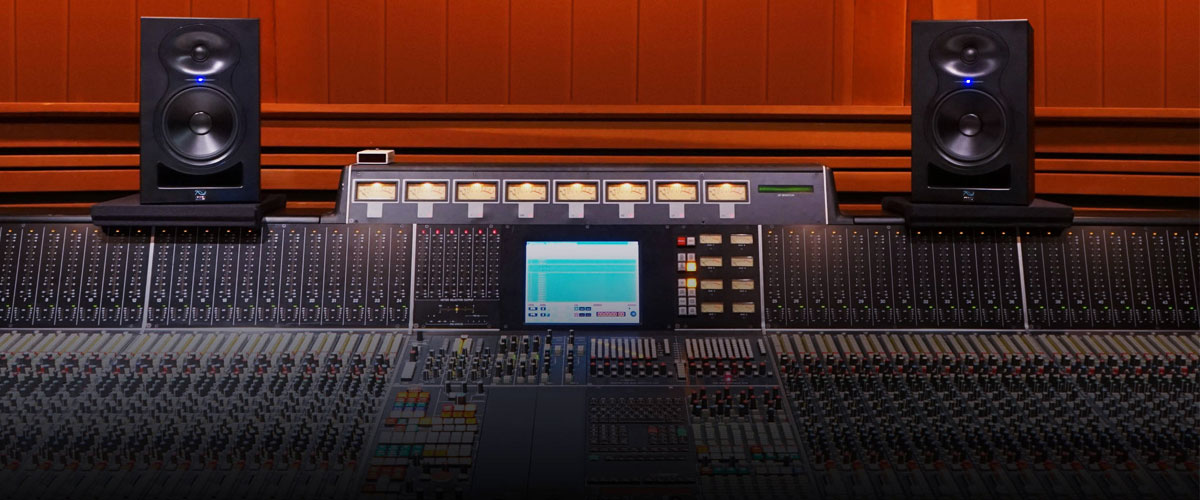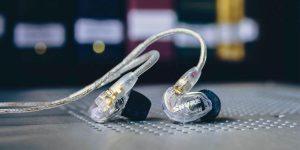Stage monitors, often referred to simply as “monitors,” are a vital part of any concert setup and are essential tools at concerts that allow each member of a musical group to focus on their performance and hear themselves and their fellow musicians. These on-stage speakers help musicians maintain synchronization, pitch, and rhythm throughout the undertaking.
The effectiveness of any acoustic monitoring design requires, in addition to the technical characteristics of the equipment and special knowledge, a clear and coordinated work of the performers and the sound engineer. Next, we’ll have a look at the different types of stage monitors and some of the essential considerations for their setup.
Types of stage monitors

There are 3 basic types of personal stage monitors:
- The traditional stage monitor (Wedge monitor) is a wedge-shaped speaker placed at the front of the stage, facing the musicians. The characteristic wedge-shaped design in a compact enclosure directs sound toward the listening position, toward the performer’s ears, helping them maintain pitch, rhythm, and synchronization with other musicians as they perform. They are often located close to the performer, so there is a slight delay between sound input and sound output, eliminating the effect of sound reverb.
- In-ear monitors (IEMs) are individual, small headphones that provide personal and isolated monitoring of sound during a performance. Many professional musicians who want precise control over their music mix or need to move around the stage prefer IEMs. In-ear headphones can provide clean, clear sound without ambient noise, which is often impossible to achieve with floor-standing stage monitors.
- Side-fill monitors are another type of sound monitor, large speakers that face the performer and are placed on the sides of the stage. These devices provide additional monitoring for performers who are further from the front of the stage during a performance and do not have direct access to wedge monitors.
Passive vs active stage monitors

So, what are passive stage monitors? It is a speaker system with a built-in speaker paired with an external amplifier. The audio signal from the sound source is first sent to the external amplifier and then amplified – reproduced by the monitor speaker.
The construction of this system allows you to upgrade or replace individual components of this acoustic design without changing the entire system. Keep in mind, however, that passive stage monitors are complex systems that require additional adjustments, tuning, and troubleshooting.
Unlike passive monitors, active monitor speakers have a built-in amplifier and do not require additional equipment, making them easier to maintain and set up. However, because the amplifier is integrated into the system, it is not possible to improve the acoustics by simply changing the individual components. It will be necessary to completely change the monitor.
Which should you choose?
It depends on your needs, preferences, budget, and technical expertise. In situations where space is limited, and you need a compact installation, simple and convenient setup, active monitors are the best choice. If you expect to be able to replace the monitors in the future without changing the gain settings, passive monitors are the way to go.
Tips to avoid microphone feedback in the monitors

An unpleasant loud howl or shrill squeal from the speakers often heard during rehearsals or performances is nothing more than microphone feedback. That sounds awful! It occurs when the microphone picks up the sound from the stage monitor. Here are a few tips to help prevent microphone feedback in stage monitors:
- Proper microphone placement:
To minimize the likelihood of “feedback squeal,” keep the microphones at a safe distance (several feet) from the monitor speakers. - Proper monitor placement:
Position monitor speakers so that their sound is directed toward the performers’ ears, not the microphones. Experiment with different angles and heights to find the best monitor placement, which will maximize sound clarity and minimize the possibility of feedback. - Use directional microphones:
Using cardioid or super-cardioid microphones, which pick up sound from one side only and are less likely to pick up sound from behind or to the side, reduces the likelihood of feedback. - Monitor EQ settings:
Adjust frequency ranges. Cutting or reducing frequencies between 2 kHz and 4 kHz can help prevent feedback. - Performance techniques:
It is important for performers to maintain proper distance from microphones during a performance and to be mindful of their distance from monitors.
Today, the variety and functionality of today’s stage monitors allow experienced musicians and engineers to combine them during performances to create a balanced and comfortable monitoring environment for all members of live bands.





